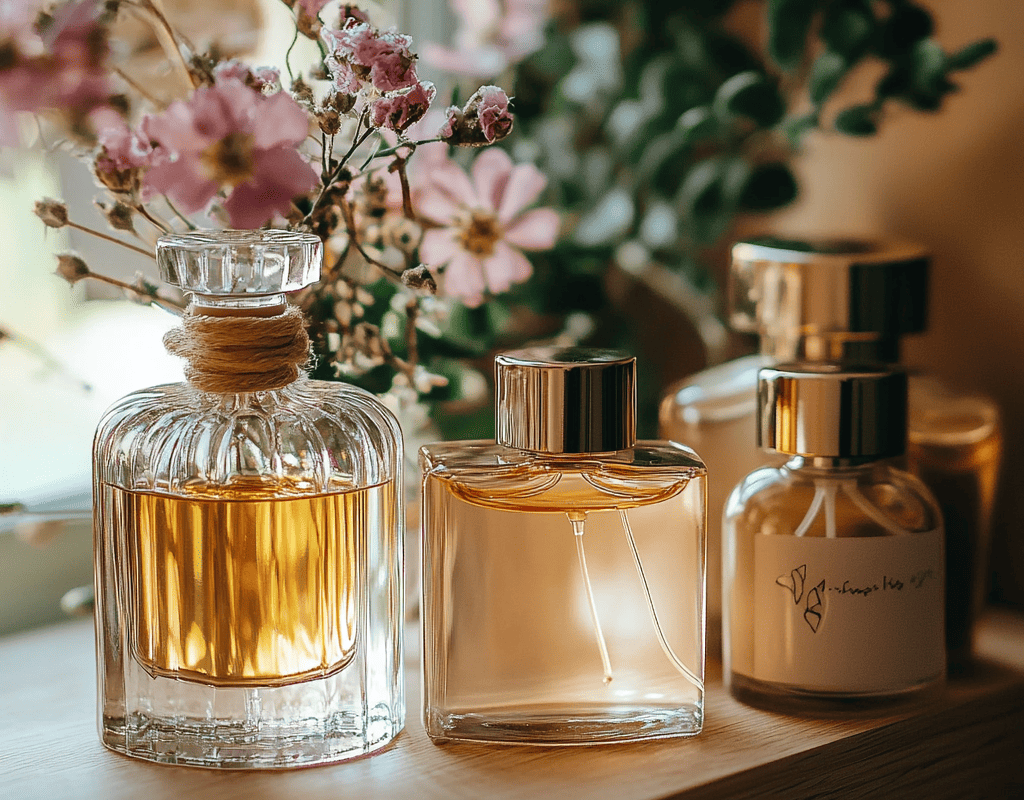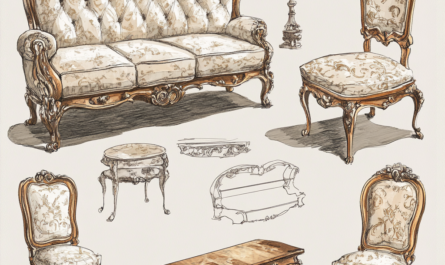Perfumes have long ceased to be exclusively a means to be worn on the body. Today, perfumes, especially in mini formats, are becoming an important part of home comfort. Their aroma can easily complement the interior, give the space a special atmosphere or emphasize the individuality of the owners – all this without unnecessary costs and bulky aroma diffusers.
In this article, we have collected practical and unconventional ways to use perfume in the interior. Cards, samples, wrappers and even long-forgotten mini-bottles can enliven the space, aromatize textiles or turn into a stylish element of decor. The main thing is to approach this creatively and with taste.
Aromatization of wardrobe and clothes drawers
One of the simplest and most effective ways to scent your home is to use perfume in your closets and clothing drawers. This gives things a fresh, well-groomed feel, and also allows you to create a recognizable “signature” for the owner. Samples and scented cards are especially good at this task.
Such elements are easily placed among folded things, without taking up space and without direct contact with the fabric. The main thing is not to use too strong aromas and not to spray perfume directly on clothes to avoid stains. It is better to put the fragrant carrier in a fabric bag or paper envelope.
Scented samples can be reused: even when the liquid has almost evaporated, the aroma remains inside the package for a long time. And scented cards can be cut into pieces and placed in different sections of the wardrobe.
Useful ideas for scenting cabinets:
● Use paper samples or empty mini bottles.
● Create scented bags with pieces of scented paper
● Place the cards on the inside walls of the box.
● Choose fragrances according to the season – fresh in summer, warm in winter
Refreshing textiles and upholstered furniture
Perfumes do a great job of lightly scenting pillows, blankets, curtains and other upholstered furniture. The main thing is not to overdo it, because the smell should be background, unobtrusive and not conflict with the overall interior or personal perfume.
It is best to use fragrances with soft, clean notes: musk, cotton, lavender, light woody tones. Perfume wrappers or fabric testers can be carefully placed under decorative pillowcases, in the folds of sofa cushions or under the seats of chairs.
If you have an empty mini-bottle that you no longer pour perfume into, you can hide it behind a curtain or in a pillowcase. It is important to remember: alcohol-based perfumes should not be applied to open fabrics – they can leave a mark.
Current methods of textile aromatization:
● Hide odor sources inside covers and decorative elements
● Don’t use notes that are too sweet or heavy.
● Try to match the scent with the purpose of the room.
● Refresh the scent every 1-2 weeks
Perfumes in the decor of the desktop and shelves
The workspace is a place where it is especially important to create a mood. A light aroma near the area where you work or study can increase concentration, improve the emotional background and even charge you for creativity. Samples in envelopes, neatly hidden behind books or decorative items, will do.
Designer cards and wrappers that can be framed or placed in glass stands look especially aesthetically pleasing. They not only emit a light aroma, but also become part of the visual design of the table or shelf.
Some use mini bottles as decorative elements: they put them on a shelf next to books, figurines, photographs. If the bottle is beautiful, even empty it remains an expressive part of the interior.
Workspace ideas:
● Place scented cards behind your laptop or lamp.
● Decorate a corner with a fragrant collage of perfume packaging
● Use small bottles as art objects
● Avoid choosing irritating or strong scents
Use of fragrances in the hallway and entrance area
The first impression of a house starts from the threshold – it is in the hallway that light aromatization is appropriate. It sets the tone for the entire atmosphere and can be especially noticeable to guests. To make the aroma less aggressive, use the remains of perfume applied to fabric or paper hidden in a decorative bowl or basket.
You can also put scented cards in shoe drawers or hang them in your coat closet. This not only creates a feeling of freshness, but also helps combat unwanted odors.
Samples in the form of napkins or fabric wrappers are conveniently placed in the pockets of jackets and coats – this way the aroma will open up every time you take clothes. At the same time, the smell will be associated with the house, and not just with the perfume itself.
Suitable ways to scent your hallway:
● Cards and testers in the pockets of outerwear
● Scented elements in shoe boxes
● Using Samples in Decorative Bowls
● Mini bottles on a shelf for keys or small items
Scented decoration of gifts and letters
Gift wrapping or letter wrapping is a great place to get creative with fragrance. Leftover scents or scented cards can be tucked inside the wrapping to create a strong first impression. The scent will be associated with the moment, giving the gift emotional depth.
You can also scent the wrapping paper – just lightly spray it on the inside and let it dry completely. This approach is especially good for gifts associated with caring: blankets, candles, books.
If you send a letter or a postcard, include a scented leaflet or card – the recipient will definitely remember this moment. Just remember to pack everything hermetically so that the aroma does not evaporate prematurely.
Scented gift ideas:
● Perfume wrappers in envelopes or packaging
● Mini spray on the inside of the paper
● Cards between layers of packaging
● Decorate with scented ribbon or sticker
Temporary compositions and seasonal fragrances
The interior, like the weather outside, changes with the seasons – and perfume can become part of these metamorphoses. In the summer you want freshness, in the winter – warmth and spices. Using mini-bottles or samples by season allows you not only to create a mood, but also to use small volumes of perfume more rationally.
Create a set of seasonal scents for yourself and alternate them in different corners of the house. In the spring, you can scent curtains and window sills, in the fall – carpets and blankets. Each scent will create a new feeling of space.
This is especially convenient for those who like variety and do not want to be tied to one scent. Temporary compositions do not require investment – it is enough to use what is already in the home collection.
Ideas for seasonal scent changes:
● In spring – light floral and green scents
● In summer – citrus, sea freshness, coolness
● In autumn – woody, leathery, spicy notes
● In winter – vanilla, cinnamon, incense, amber
Perfumery in the interior is a game, creativity and a way to express yourself even in the smallest details. There is no need for expensive diffusers or exclusive aroma systems – a little imagination, love for smells and the desire to make the house truly yours are enough.
Mini bottles, samples, scented wrappers and cards – all of these can be turned into stylish and cozy touches that will give joy and a sense of thoughtfulness. Smells make a home not just beautiful, but alive, filled with mood and memories.
Questions and Answers
Yes, but you should apply it to fabric or paper, not directly to furniture or clothing.
In closed spaces – up to several weeks, especially in drawers or textiles.
Fresh, clean and neutral – citrus, woody, light floral.




